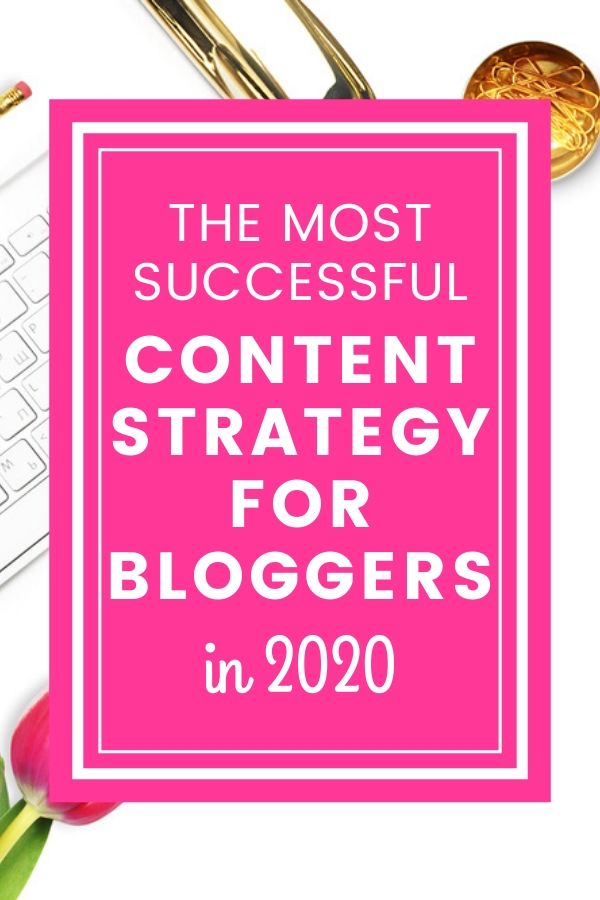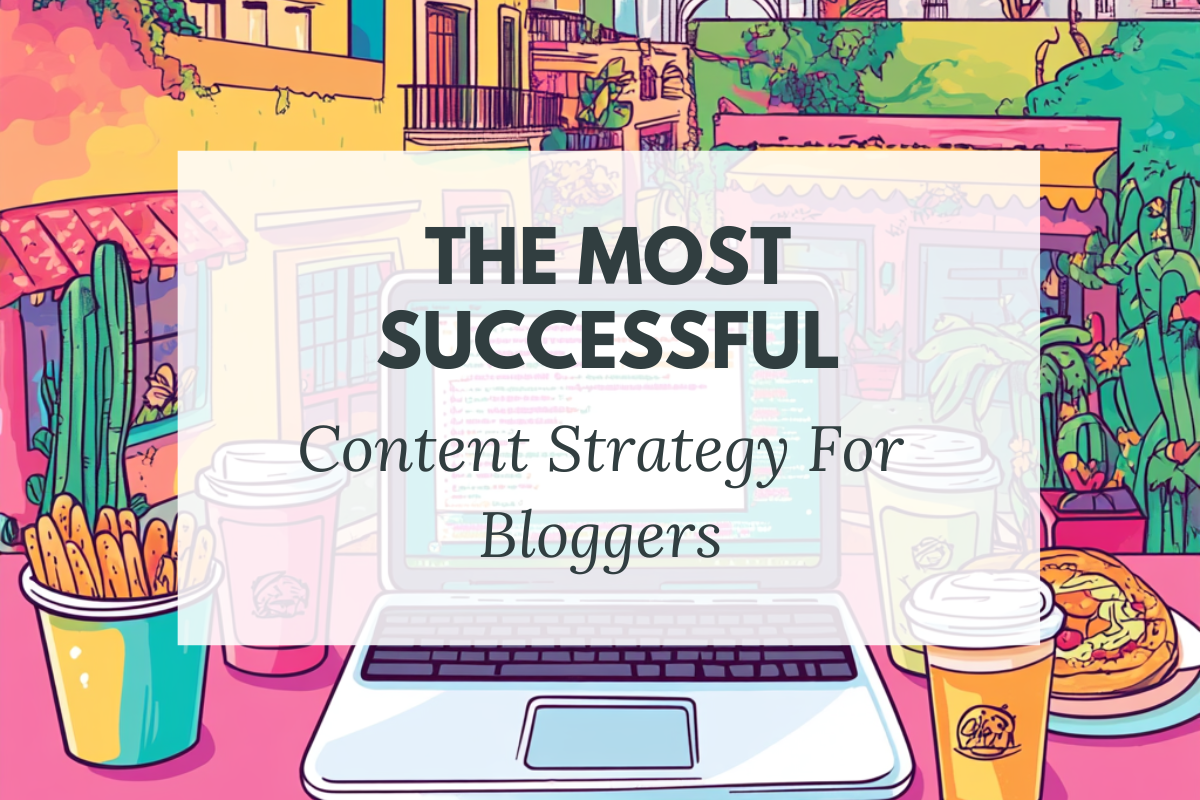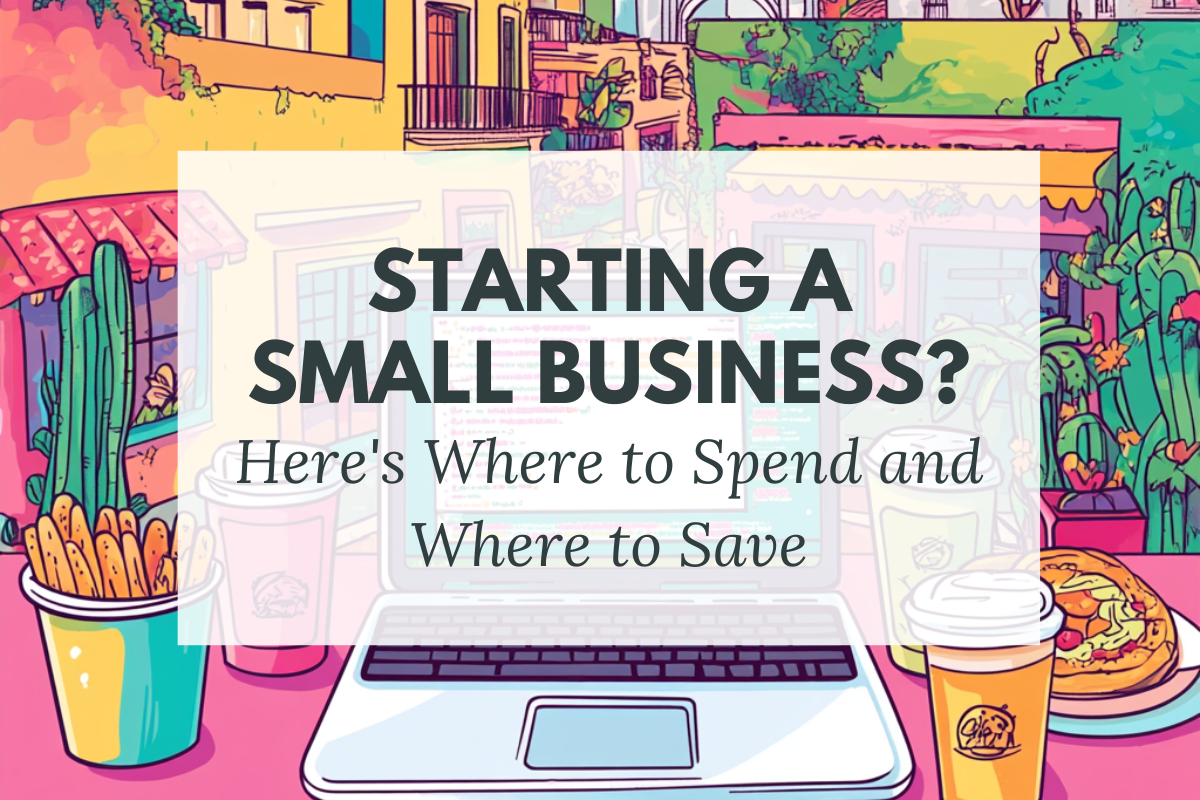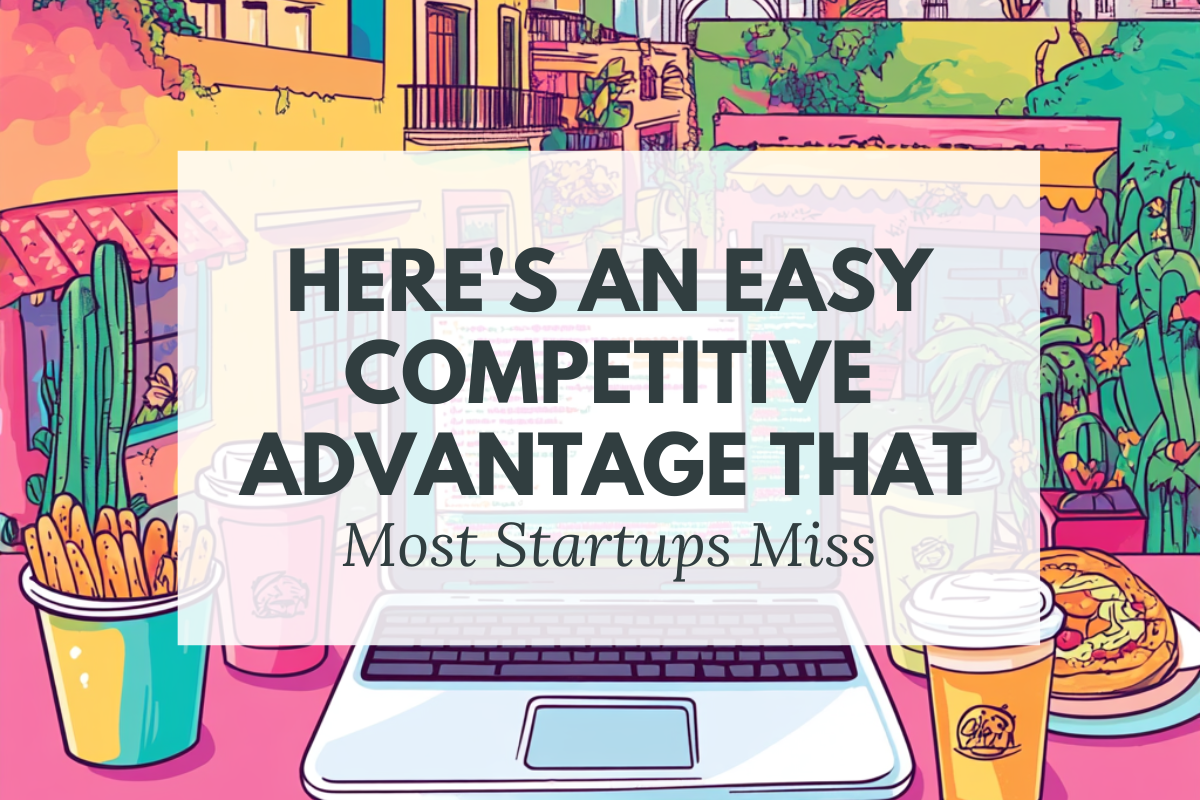It’s impossible to ignore the importance of content strategy if you are looking to grow your blog. A great content strategy that works to bring you an audience can have a massive impact on your business and can mean the difference between running a tiny blog as a hobby and being the owner of a successful high traffic blog that brings you monthly revenue, customers and a solid profit.
Here, I’ll walk you through exactly what it means to have a content strategy, the exact strategy that’s working right now, and what you need to start doing to get content working for your blog – even if you are just starting out.
Please note this post may contain affiliate links. Please refer to my disclosure for more information.
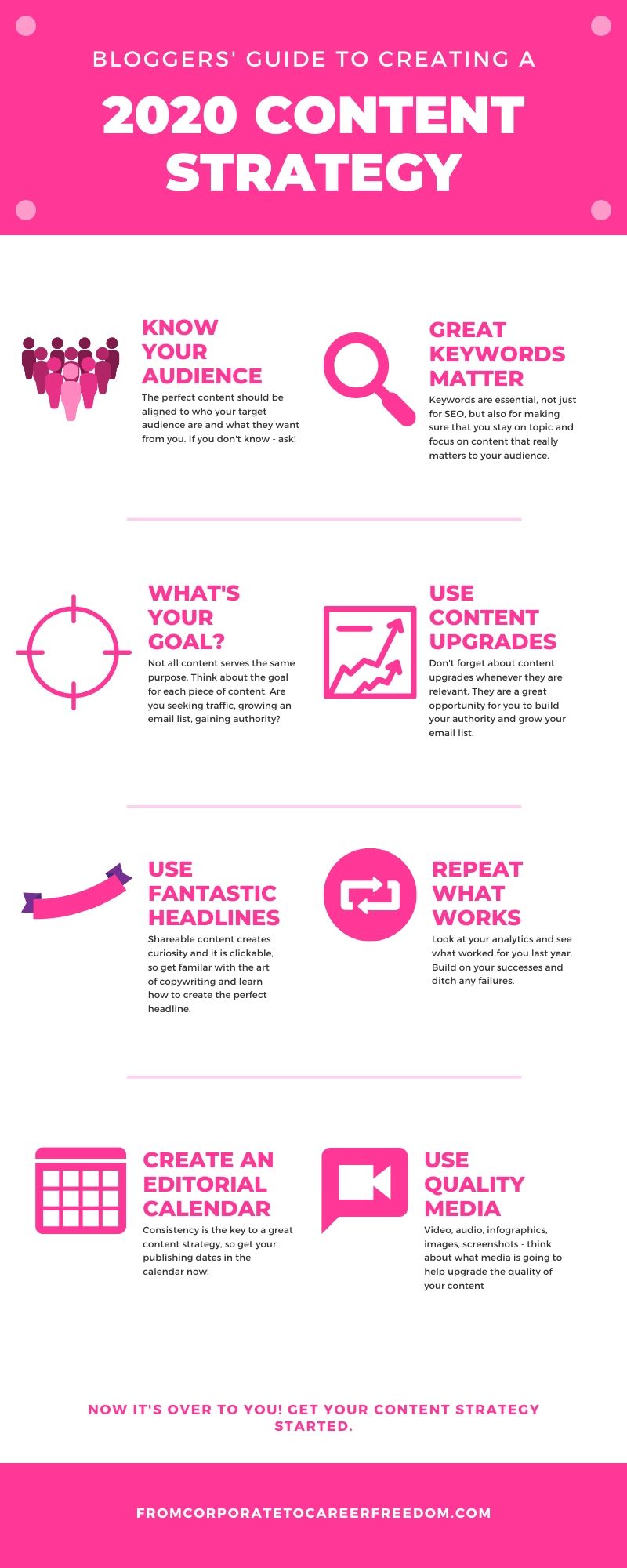
What Is A Content Strategy?
A content strategy is pretty straightforward. It’s your plan for how you are going to use content to grow your business. For bloggers, this almost always means a strategy to drive traffic to your blog. Content is a broad term – it can mean anything from video, podcasts, social media posts, but for the purpose of this guide, I’m referring specifically to blog content – i.e. a content strategy for your blog posts.
The goal of this content strategy is to bring your blog plenty of good quality traffic, regular email subscribers and ultimately, a profitable business.
Opt For A Content Strategy That Targets Your Ideal Audience
It’s very tempting (I know because I’m guilty of it myself) to write content because you have some unique knowledge on a subject that you think is worth sharing. The problem with this is that it might not be the knowledge your audience is after.
A clear content strategy starts with understanding your audience and what they want from you. Think back to why you started your blog and why you chose your particular niche.
The content you produce in 2020 has to be 100% relevant to your audience and has to align with that niche (whether that niche is big or small) so that you can be confident that when visitors land on your blog, the content you share is the content they are expecting to see.
If you aren’t sure what content fits well with your niche, you have a couple of options available to you (you can do one of these, or even all three):
Option 1: Ask your audience
If you have an Instagram, Facebook or Twitter account or an email list, send out a survey to your audience. Find out what topics they’d love you to write about.
Option 2: Look at your analytics
Look at your most high traffic posts for the past 30 days. And take note of the time spent reading those posts. Which ones are getting the most traffic? Which ones appear popular with your audience? Use this to decide future topics to write about.
Option 3: Research your competitors
Most keyword tools on the market will help you to see what words and topics are popular with your audience. I personally like SEMRush because you can type in your competitors’ websites and see which keywords and topics are bringing them the most traffic. They have a free 7-day trial which you can access with this link.
Once you’ve done that research, you should have a list of topic ideas. Next, we’ll move on to keywords.
Decide On Your Keywords
Topics are broad. Keywords are more specific and are essential to your content strategy in order to get your posts found on search engines (and Pinterest, which is a great traffic source).
Go for keywords that are hugely relevant to your topics, have search intent (i.e. when someone is searching for that keyword, your future post is the one that they intend to find), and aren’t too competitive. I’d recommend you use SEMrush, which is the tool I use and love because it is a step above the competition when it comes to SEO tools, which means it’s going to help you edge out other websites when you want to rank higher than them on Google.
What’s the goal for your content?
Not all blog posts serve the same purpose. You might want to write a great review post like this one and link to an affiliate product to generate earnings. Perhaps you’re a consultancy and you want to use a blog post to showcase your expertise and get new customer leads. Or maybe you’re a blogger and you are getting paid to write a sponsored post on behalf of another company. Or perhaps you are a startup who wants to grow their email list before they launch their product. How about a tutorial or listicle that’s going to rank well on Google and will also be loved by your audience. A how-to guide that answers your audience’s most common question is going to get clicks and shares if you do it right.
These are very different intents and need very different types of content. They meet different but important goals for your content strategy – some will do well in the SEO rankings. Others will do poorly but will get you plenty of email subscribers. Others will make your audience fall in love with you and consider you the expert in that topic. All these goals are important to a content strategy so your content has to cover different angles.
The other thing you want to be asking yourself is whether each piece of content is going to be evergreen (always gets traffic, always relevant, never ages), current (e.g. ‘in 2020’ – great for ranking on Google) or seasonal (e.g. valentines, Christmas etc). You want to aim for a mixture of current and evergreen, and if you are in the relevant niche, choose a few seasonal posts as they can perform fantastically on social media – especially Pinterest.
Use content upgrades
Content upgrades are essential to list building. If you want to learn more about content upgrades, I have a great beginner’s guide here for you to read. You don’t have to add content upgrades to every article (after all, that is a lot of work) but add them to your highest-traffic posts and the posts that have the most relevance to your core audience. Always make sure that the content upgrade you are offering is really in line with the post they’ve just read. They should read the post and immediately think: yes, I need to know more. Let’s download this too.
Choose Great Titles
A good content strategy rests on getting clicks and shares. The most important factor in that is going to be your post headlines.
Spend time picking the right headline. Make it interesting and clickable. Make sure it’s relevant but that it also attracts attention, You have to think strategically about how interesting your headline would seem if it was listed with 100 other blog posts on the same page.
Use a tool like CoSchedule’s free Headline Analyzer to test whether or not your headline scores well. It really can make a difference.
Repeat What Works
Review the content that performed the best for you in 2019. What worked well? What did you love writing about? And what are you talented at? Maybe you’re great on video. Perhaps you write fantastic tutorials. Always try and do more of what’s already working well, as this is the thing that’s going to move your business in the right direction, especially when it comes to making it profitable.
The other thing I’d suggest at this point is to review your weak spots. Perhaps you had lots of traffic but your email list didn’t grow as well as you hoped. Think about focusing your content strategy in 2020 around growing your email list (I have a great tip for this, by the way. I use a tool called Optin Monster which adds high converting pop-ups to your web pages. What’s great is that it tells you the opt-in conversion rate for each page on your website. You’d be surprised at how different the conversion rates are. On my consultancy website, I have a really high traffic post about Instagram hashtags, but my email list conversion rate is only 2%, whereas some of my more detailed posts that have things like how-to guides convert closer to 10%).
You can start using Optin Monster on your website now by clicking on this link.
Create An Editorial Calendar
I use something very basic for my calendar and that’s a spreadsheet. So editorial calendars really don’t have to be fancy. The most important feature is that they lay out all your future content, the purpose of that content, and any particular features of that content (for example, whether you need to write a content upgrade, or whether it’s a review post that’s going to contain an affiliate link). You should also have a rough schedule for when you are going to write and publish these across the year. I cannot stress enough that when it comes to growing your website, consistency is the most important aspect, and consistently publishing content is what’s going to help your website get seen by search engines and get traffic (please trust me on that one – I can tell you from bitter experience how fast my traffic has grown when I’ve regularly posted, and how it’s flatlined when I’ve ignored it for a couple of months in favor of another ‘important’ job for my business).
It can seem overwhelming to write so many posts and articles, especially when you are just getting started. It’s easy to get writer’s block. So one thing I always do that helps me is write the skeleton of a post first – just quickly, in about 5 minutes – and then come back to it later. When I have a few sketchy ideas for a post from a skeleton plan I find it so much easier to start writing the first, rough draft.
Don’t Forget About Images
When writing your content strategy, think about what media you’re going to use with your content. Video, audio, images, infographics, screenshots, quotes. Think about what type of media is going to support your content well, and what type fits your strengths. Plan this out as part of your content strategy so it doesn’t get overlooked once you’re in the midst of writing long, lengthy blog posts.
And Finally – Have A Consistent Promotional Strategy For Each Post
Derek Halpern has the most valuable advice on this topic and I’ve always followed it. For every new piece of content you write, use the 80/20 rule – 20% of your time creating it and 80% of your time promoting it.
Every content strategy should have a separate area where you have almost a checklist for how you promote each piece of content. Here’s a simplified version of what mine looks like:
- SEO optimise post using Yoast
- Create social media images for each post and upload using Social Warfare
- Add post to Crowdfire for ongoing twitter promotion
- Add new Instagram post to Tailwind
- Pin directly from the post to my most relevant board (I use this lady’s advice when it comes to Pinterest and it has been the key that helped me 10x my traffic in 2019)
- Add the pin to relevant Tailwind tribes (I’d highly recommend signing up – the tribes are free)
- Create a regular monthly promotional schedule on social media for the post
And that’s it! Follow this, and I can confidently say that 2020 will be your best year ever when it comes to content marketing. The biggest takeaway from this is to stay consistent, stick to your plan, and always go for quality over quantity. Good luck!
What To Read Next
How To Start An Email List On Your Brand New Blog (List Building Series: Part 1 Of 5)
